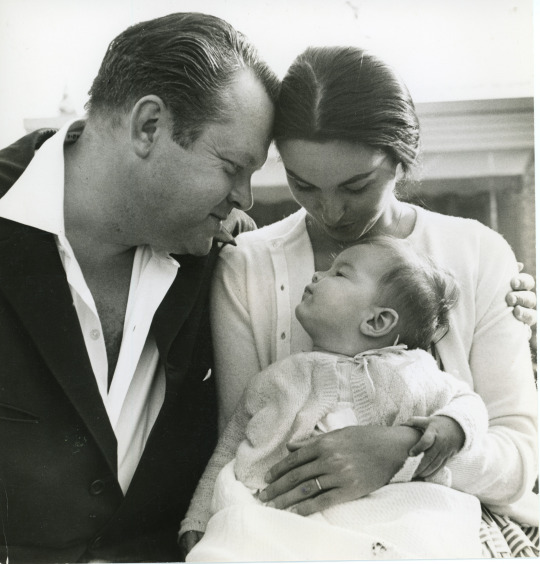#12 February 1920
Photo










The title of a city was granted to Dalías by King Alfonso XIII on February 12, 1920.
#title of a city#Dalías#12 February 1920#anniversary#Spanish history#Almería province#Andalusia#Poniente Almeriense#small town#España#Spain#Southern Europe#Southern Spain#architecture#cityscape#travel#vacation#summer 2021#original photography#tourist attraction#landmark#Sierra Gador#Plaza de la Alameda#Mirador Ermita Santa Cruz#Church of Santa María de Ambrox de Dalías#C. Rbla. de Gracia#Ayuntamiento de Dalías
11 notes
·
View notes
Text

As you would expect February 29th is a bit bereft of anniversaries, but did you know..........
Anyone born on this day is said to be unlucky in Scottish culture, and referred to as “Leaplings.” True, they don’t get to celebrate many birthdays, but to make things worse, Scottish tradition adds on another layer by saying that leaplings are doomed to a lifetime of “untold suffering.” They also consider leap years as doomed for farmers, as the saying goes: “Leap year was never a good sheep year.”
Ithink we all know that it is the day of the year a lady can traditionally propose toher man, but in Scotland women intending to propose are advised to wear a red petticoat visible to their love – perhaps to give them fair warning! ;) Tradition also stated that any man who refused a Leap Day proposal should be issued with a fine, which could range from money to silk gowns.
If you are trying to work out the math on what you're exact age would be if you were born on February 29th, then you are in luck.
1920: 104 years old or 26.
1924: 100 years old or 25.
1928: 96 years old or 24.
1932: 92 years old or 23.
1936: 88 years old or 22.
1940: 84 years old or 21.
1944: 80 years old or 20.
1948: 76 years old or 19.
1952: 72 years old or 18.
1956: 68 years old or 17.
1960: 64 years old or 16.
1964: 60 years old or 15.
1968: 56 years old or 14.
1972: 52 years old or 13.
1976: 48 years old or 12.
1980: 44 years old or 11.
1984: 40 years old or 10.
1988: 36 years old or 9.
1992: 32 years old or 8.
1996: 28 years old or 7.
2000: 24 years old or 6.
2004: 20 years old or 5.
2008: 16 years old or 4.
2012: 12 years old or 3.
2016: 8 years old or 2.
2020: 4 years old or 1.
The next leap year will take place in 2028.
2K notes
·
View notes
Text














BOBSTROLOGY
A completely serious presentation by @pegasusdrawnchariots and oatflatwhite
written version under the cut!
♈️Patrick O’Keefe [April 3 1926]
♈️Robert Sink [April 3 1905]
♈️John Julian [5 April 1924]
♈️Renée Lemaire [10 April 1914]
♈️James Miller [11 April 1924]
♈️Walter “Smokey” Gordon [April 15 1920]
♉️~Ronald Speirs [April 20 1920]
♉️Alton More [April 22 1920]
♉️Henry Jones [27 April 1924]
♉️Edward “Babe” Heffron [May 16 1923]
♉️John Martin [May 12 1922]
♉️Joseph Liebgott [May 17 1915]
♉️Norman Dike [May 19 1918]
♉️William Guarnere [April 28 1923]
♊️David Webster [June 2 1922]
♊️George Luz [June 17 1921]
♊️Roy Cobb [June 18 1914]
♋️Frederick “Moose” Heyliger [June 23 1916]
♋️Albert Blithe [June 25 1923]
♋️Donald Hoobler [28 June 1922]
♋️Thomas Meehan [8 July 1921]
♋️John Janovec [9 July 1925]
♋️Robert “Popeye” Wynn [July 10 1921]
♋️James "Moe" Alley [July 20 1922]
♌️~Burton “Pat” Christenson [July 23 1922]
♌️Eugene Jackson [29 July 1922]
♌️Donald Malarkey [July 31 1921]
♌️Edward Tipper [3 August 1921]
♍️Floyd Talbert [August 26 1923]
♍️Alex Penkala [August 30 1922]
♍️William Dukeman [3 September 1921]
♎️Eugene Roe [October 17 1922]
♎️Harry Welsh [September 27 1918]
♎️Lewis Nixon [September 30 1918]
♎️Ralph Spina [October 5 1919]
♎️Thomas Peacock [October 9 1923]
♏️Denver “Bull” Randleman [November 20 1920]
♑️Lynn “Buck” Compton [December 31 1921]
♑️Antonio Garcia [January 17 1925]
♒️Richard "Dick" Winters [January 21 1918]
♒️Herbert Sobel [January 26 1912]
♒️Carwood Lipton [January 30 1920]
♒️Warren “Skip” Muck [January 31 1922]
♓️Lester Hashey [23 February 1925]
♓️Charles “Chuck” Grant [1 March 1922]
♓️Robert Strayer [March 2 1912]
♓️Wayne “Skinny” Sisk [March 4 1922]
♓️Frank Perconte [March 10 1917]
♓️Darrell “Shifty” Powers [March 13 1923]
♓️Joseph Toye [March 14 1919]
6 Aries 🥉
8 Taurus 🥇
3 Gemini
7 Cancer 🥈
4 Leo
3 Virgo
5 Libra
1 Scorpio
0 Sagittarius 🥄
2 Capricorn
4 Aquarius
7 Pisces 🥈
10 🔥
13 🪨
12 💨
15 💧
20 cardinal
17 fixed
13 mutable
22 masculine
28 feminine
#band of brothers#hbo war#bobedit#hbowaredit#bobstrology#astrology#liz makes things#disclaimer: our interpretation is ironclad. we alone decide the law. argue w the wall.#< we say as an aries and scorpio with renee and bull in our corners <3
192 notes
·
View notes
Text
Anticipated New Releases of 2024
**As anticipated by Me. Mostly SFF. Links are to goodreads because that's what I use, sorry. Anything marked "new to me" I haven't read anything by that author before and therefore can't vouch for the quality. I just think the premise is neat.**
Emily Wilde's Map of the Otherlands, Heather Fawcett (16 January)
Sequel to the charming novel about the fairy anthropologist.
Exordia, Seth Dickinson (23 January)
Well, it isn't a new Baru Cormorant, but this modern SF about first contact may be the next best thing.
City of Stardust, Georgia Summers (30 January)
New to me. A young woman descends into the underworld in order to break her family's fatal curse.
The Tainted Cup, Robert Jackson Bennett (6 February)
New to me. A sherlock holmes flavored duo solves the mystery of the murder of an imperial official in a labyrinthine fantasy realm.
What Feasts at Night, T Kingfisher (13 February)
The sequel to the mushroom horror book What Moves the Dead.
The Warm Hands of Ghosts, Katherine Arden (13 February)
A ghost story set in WW1 about a woman searching for her missing brother.
The Fox Wife, Yangsze Choo (13 February)
New to me. A detective in 1908 Manchuria investigates a young woman's death in an area full of mythical foxes.
Redsight, Meredith Mooring (27 February)
New to me. Unpowered priestess and Imperial pawn is set on a collision path with a pirate with a grudge for the Imperium (Gay romance).
Sunbringer, Hannah Kaner (12 March)
Sequel about the professional godkiller Kissen.
Jumpnauts, Hao Jingfang (12 March)
New to me. A SF novel in translation from Chinese, with three scientists joining forces to deal peacefully with a first contact situation.
The Woods All Black, Lee Mandelo (19 March)
I liked Mandelo's debut novel very much so I'm excited to read this queer horror novella set in 1920s Appalachia.
Floating Hotel, Grace Curtis (19 March)
New to me. A series of cozy character vignettes on a space cruise ship after a murder has occurred. One of the four (!) space hotel murder crimes books coming out this year.
The Emperor and the Endless Palace, Justinian Huang (26 March)
New to me. Reincarnation gay romance set in 4 BCE China, the 1740s, and modern-day LA.
Alien Clay, Adrian Tchaikovsky (28 March)
Far future space xenoarchaeology by a man trapped on a prison planet.
Someone You Can Build a Nest In, John Wiswell (2 April)
New to me. Bizarre lesbian cannibalism monster romance from the point of view of the monster.
The Familiar, Leigh Bardugo (9 April)
Glad to see Bardugo writing more adult fantasy, and this one is especially exciting because it's a fantasy set in early modern Spain with a Jewish main character. Fun to see a more original historical period.
A Sweet Sting of Salt, Rose Sutherland (9 April)
New to me. Lesbian selkie romance.
Death in the Spires, KJ Charles (11 April)
Charles branching out from romance into historical Oxford murder mystery about a group of friends with dark secrets.
Audrey Lane Stirs The Pot, Alexis Hall (22 April)
The new Hall thinly veiled british baking show romcom. Libby says it's releasing in April but I've heard nothing from the author so I think it may be Alecto'd (shifted to next year)
Necrobane, Daniel M Ford (23 April)
Sequel to the dungeons and dragons-esque low fantasy lesbian necromancy book.
A Letter to the Luminous Deep, Sylvie Cathrall (25 April)
New to me. Sweet underwater epistolary academic romance.
How To Become the Dark Lord and Die Trying, Django Wexler (21 May)
New to me. A young hero caught in a fantasy time loop gives up and tries being the villain in an attempt to escape.
Goddess of the River, Vaishnavi Patel (21 May)
Another woman-centered retelling of Hindu mythology, this time based on the river goddess Ganga.
Escape Velocity, Victor Manibo (21 May)
New to me. Evil and toxic private school alumni jockey for position in a space hotel event in an attempt to escape a dying Earth.
The Fireborne Blade, Charlotte Bond (28 May)
New to me. Gay dragon slaying knight novella.
Evocation, ST Gibson (28 May)
New to me but looks very cool. Attorney and medium David attempts to escape his deal with the devil with the help of his ex boyfriend and his ex boyfriend's wife (Poly romance).
Service Model, Adrian Tchaikovsky (4 June)
In an SF future, a robot kills its human owners and ventures out into a world where human supremacy is beginning to crumble.
Lady Eve's Last Con, Rebecca Fraimow (4 June)
New to me. A con artist seeks revenge on the man who hurt her sister, who's coincidentally also on a space cruise ship (Sapphic romance subplot).
Triple Sec, TJ Alexander (4 June)
An actual mainstream published poly romance (!!) by trans author Alexander.
Running Close to the Wind, Alexandra Rowland (11 June)
Gay! Pirates! Scheming! Alt fantasy world! Monks! I liked Taste of Gold and Iron a lot and I'm very excited for this one.
The Knife and the Serpent, Tim Pratt (11 June)
New to me. Space opera about an interdimensional organization. Also, there's a sentient starship.
The Witchstone, Henry Neff (18 June)
A childhood favorite of mine's adult debut, featuring a demon who suddenly has to shape up at his curse keeper job after eight hundred years of slacking.
Rakesfall, Vajra Chandrasekera (18 June)
VERY excited to read more weird queer sff from this author after a fantastic debut. Looks weird. I'm in.
Foul Days, Genoveva Dimova (25 June)
New to me. A witch in a Slavic fantasy inspired world flees her evil ex, the Tsar of Monsters. There's also a plague and a detective.
Saints of Storm and Sorrow, Gabriella Buba (25 June)
New to me. Filipino inspired anticolonialist fantasy novel about a nun who is secretly practicing the religion of her goddess.
The Duke at Hazard, KJ Charles (18 July)
A queer regency with an incognito duke by one of my particular favorite romance authors.
Long Live Evil, Sarah Rees Brennan (30 July)
!!! Very excited to see a new adult fantasy by Brennan. A reader is dragged into a fictional world and finds herself the villain.
A Sorceress Comes to Call, T Kingfisher (20 August)
A retelling of The Goose Girl from reliably good fairy tale stalwart Kingfisher.
Buried Deep and Other Stories, Naomi Novik (17 September)
Collection of Novik's short stories.
Swordcrossed, Freya Marske (8 October)
VERY excited to see a new book by talented writer Marske. A man falls in love with the duelist hired for his arranged wedding. MEANWHILE. details of the fantasy world wool industry.
Feast While You Can, Mikaella Clements and Onjuli Datta (29 October)
New to me. Small town queer cave horror.
The Last Hour Between Worlds, Melissa Caruso (19 November)
Multiple reality murder mystery spy vs spy type antics, with lesbians.
#book recommendations#on the tbr#now I would Like to put alecto the ninth on this but as we know. NO news (sobs)#long post#updated 3/8 with more books I've added since I posted this
126 notes
·
View notes
Text
A Young Person's Introduction to Early 20th-Century Western Fashion
am i hip with the kids yet
General information
Dotschkal, Janna. "1920's." FOUND. October 21, 2016.
English Heritage. "Fashion Through History: Episode 3 – 1930s." YouTube. April 16, 2023.
Rudolph, Nicole. "The History of Standardized Sizes in Womens Fashion and Why They FAILED." YouTube. May 16, 2021.
Vintagebursche. "100 Years of Classic Menswear - and what we can learn from each decade." YouTube. February 29, 2020.
Zebrowska, Karolina. "1920s Fashion Is Not What You Think It Is." YouTube. May 20, 2018.
Accessories
Cox, Abby. "Flappers, Y2K, & Capitalism are Why Women "Don't" Have Pockets." YouTube. January 12, 2023.
Cox, Abby. "The Disappointing Truth On Why We Don't Wear Hats Anymore..." YouTube. December 18, 2022.
Rudolph, Nicole. "The History of the Iconic Cloche Hat: Making 1920s Fashion." YouTube. September 18, 2022.
Rudolph, Nicole. "When Hats were Illegal: Sewing a Goth Edwardian Hat." YouTube. February 21, 2021.
Sheehan, Sarah. "Neo-Egyptomania." PatternVault. December 31, 2022.
Zebrowska, Karolina. "Why Did We Stop Wearing Hats?" YouTube. April 28, 2020.
Cosmetics
Banner, Bernadette. "Making and Testing a Victorian Skincare Routine." YouTube. April 8, 2023.
English Heritage. "1930s Makeup Tutorial | History Inspired | Feat. Amber Butchart and Rebecca Butterworth." YouTube. December 18, 2018.
Holland, Evangeline. "On How to Be Lovely." Edwardian Promenade. April 15, 2010.
Rudolph, Nicole. "The Controversial History of Color Season Analysis." YouTube. November 4, 2023.
Fabrics
Rudolph, Nicole. "The History of Elastic." YouTube. July 4, 2021.
Rudolph, Nicole. "Wearing Overalls to Boycott Fashion Greedflation? Weird History of 1920." YouTube. March 16, 2024.
Gowns and formal wear
Banner, Bernadette. "I Redesigned Mary Poppins' Jolly Holiday Dress Based on REAL Edwardian Lingerie Gowns." YouTube. February 20, 2021.
Banner, Bernadette. "I Remade Mary Poppins’ Dress to be Actually Edwardian." YouTube. July 9, 2022.
Cox, Abby. "Alexander McQueen & the Patriarchy Problem in Modern Fashion." YouTube. October 20, 2023.
Cox, Abby. "What Makes a Gown Haute Couture (like House of Worth) in Victorian and Edwardian Eras?" YouTube. September 19, 2021.
Lady Rebecca Fashions. "An Edwardian Woman's Fashion Evolution." YouTube. June 4, 2022.
Oakes, Leimomi. "Terminology: what is a lingerie dress or lingerie frock? (and blouse, and skirt)." The Dreamstress. July 21, 2018.
Rudolph, Nicole. "Stop Idolizing Coco Chanel: a shocking history of theft." YouTube. January 13, 2024.
Rudolph, Nicole. "The Truth about the Fringed Flapper: Making 1920s Evening Dresses." YouTube. November 6, 2022.
Vintagebursche. "1920s Theme Party - How to dress." YouTube. December 9, 2023.
Zebrowska, Karolina. "1920s Fashion Encyclopedia, Pt 1: Daywear." YouTube. November 27, 2019.
Hair care and styling
Banner, Bernadette. "I Tried Following a Real Edwardian Hair Care Routine." YouTube. May 12, 2020.
Lady Rebecca Fashions. "Getting Dressed in the Edwardian Era / Gibson Girl Hairstyle Tutorial." YouTube. June 12, 2020.
Lady Rebecca Fashions. "Titanic-era Hair Tutorial // Getting Dressed in the 1910's." YouTube.September 4, 2020.
SnappyDragon. "Historical hair myths debunked : How often should you wash your hair—daily shampoo or no shampoo?" YouTube. August 12, 2022.
Zebrowska, Karolina. "Weird Edwardian Beauty Tips." YouTube. February 11, 2017.
Laundry and starching
Banner, Bernadette. "Ok but how did the Edwardians WASH these dresses?" YouTube. August 3, 2022.
Outerwear
Cox, Abby. "Athleisure: Destroying Fashion & the Environment." YouTube. January 18, 2024.
Rudolph, Nicole. "150 years of Masc Women causing a Moral Panic." YouTube. June 17, 2023.
Rudolph, Nicole. "The History of Jeans, T-shirts, and Hoodies: Time Travel 101." YouTube. March 20, 2022.
Zebrowska, Karolina. "SPRING/SUMMER FASHION TRENDS REVIEW but it's 1936 (ft. original fabric samples!)." YouTube. April 22, 2022.
Shoes
Rudolph, Nicole. "I Made Witchy Edwardian Shoes by Hand!" YouTube. March 14, 2021.
Rudolph, Nicole. "Making 100 year old Comfy Slippers: Free Pattern!" YouTube. December 30, 2023.
Rudolph, Nicole. "The Myth of Tiny Feet "Back Then"." YouTube. September 26, 2021.
Rudolph, Nicole. "The True History of Stiletto Heels : the battle between Ferragamo and Dior." YouTube. August 26, 2023.
Zebrowska, Karolina. "Why Is No One Talking About 1930s Shoes?" YouTube. September 15, 2020.
Undergarments
Banner, Bernadette. "1903 Patented Bustle Pad Reconstruction." YouTube. June 8, 2019.
Banner, Bernadette. "Achieving That Classic Edwardian Shape: Reconstructing a 1902 Bust Bodice." YouTube. April 16, 2020.
Lady Rebecca Fashions. "So What are Guimpes Anyway? // Examining Antique Edwardian Guimpes." YouTube. August 21, 2020.
Lady Rebecca Fashions. "They Wore Corsets in the 1920's?!" YouTube. January 29, 2022.
Rudolph, Nicole. "Did Brassieres End the Corset?" YouTube. February 28, 2021.
Rudolph, Nicole. "Dressing in Edwardian Clothing: Undergarments and Layers of 1907." YouTube. November 1, 2020.
Rudolph, Nicole. "How Flappers got their Figure: the 1920s Silhouette." YouTube. July 10, 2022.
SnappyDragon. "How pin-up photos fooled dress history : the making and marketing of lingerie pictures." YouTube. April 1, 2023.
#1920s#1910s#roaring twenties#fashion#menswear#flapper#gibson girl#reference#1930s#1900s#early 1900s#coco chanel#brassiere#high heels#youtube#video#cosmetics#hairstyle#hair care#shampoo#nicole rudolph#abby cox#bernadette banner#lady rebecca fashions#snappydragon#karolina zebrowska#fashion history#history#art history#edwardian era
70 notes
·
View notes
Text
[England]
Over the past five years more than 300 officers have been reported for rape and 500 for sexual assault. Only ten of those accused of sexual assault have been convicted. The vast majority – 350 – are still working for the police.
“Holly”, a serving police officer who was raped by a colleague, said there was “simply not a chance that all 350 are innocent of the things they are accused of”. Her attacker was allowed to stay in the force for years until he was exposed by The Bureau of Investigative Journalism. In the meantime Holly and others who had been attacked struggled to get the force to take their allegations seriously.
“If you made a complaint, you were painted as having serious ‘mental health issues’ or ‘attention seeking’,” she said. “It was like you had stepped back into the 1920s before all women even had the right to vote. The police took women's voices and silenced them.”
More than 250 police officers had been reported more than once for sexual offences. A dozen had more than five separate reports against their names.
The true numbers of accused officers are likely even higher. TBIJ’s data was compiled from FOI requests to every police force in the UK, but nine failed to provide full figures.
TBIJ has been tracking forces’ failure to deal with police perpetrated domestic abuse (PPDA) for the past five years. In particular, TBIJ has highlighted how forces let down victims and the public when they fail to properly investigate allegations against their own officers.
The murder of Sarah Everard by Wayne Couzens, a serving Met police officer who had been reported for exposing himself in public, showed how catastrophic the consequences of inaction on sexual offences can be. Two years on, however, there is little sign of wider reform.
In February this year David Carrick was sentenced to a minimum of 30 years in prison after admitting 24 counts of rape and sexual offences against 12 women while serving as a Met officer. He had been repeatedly reported for domestic abuse since joining the police in 2001, but those allegations had not been taken seriously.
In TBIJ’s research, of the 375 officers and staff reported for domestic abuse in the past two years, more than three quarters are still working for the police.
In 2020 TBIJ worked with the Centre for Women’s Justice to submit a supercomplaint to police watchdogs. The Independent Office for Police Conduct, the College of Policing, and Her Majesty’s Inspectorate of Constabulary and Fire & Rescue Services responded with a joint report last year, admitting there were systemic weaknesses in how forces respond to allegations against their own people.
In particular they were “not always doing enough to ensure all PPDA cases are properly and impartially investigated”. In January the National Police Chiefs Council reported that most forces had agreed to improve procedures for dealing with PPDA. In March the Casey Review found the Met Police was institutionally misogynist, racist and homophobic.
78 notes
·
View notes
Photo

On this day, 12 February 1920, the first strike organised by women in Colombia took place at the textile factory in Bello, Antioquia. Around 400 women walked out demanding equal pay with men, and end to sexual harassment by managers, the abolition of fines for sick leave, reduced surveillance and searches of workers and that salaries be paid directly to women workers, rather than to their fathers or husbands. Key organisers included Teresa Tamayo, Adelina González, Carmen Agudelo, Teresa Piedrahita, Matilde Montoya and Betsabé Espinal (pictured). Most male workers at the factory crossed the picket lines while police tried to break the strike. But the women held firm; they had widespread public support and received donations from workers, especially in Medellin. Eventually, on 4 March, the women won most of their demands, including a 40% pay increase, reduced working hours, better health and safety, the abolition of fines and a number of abusive managers were dismissed. https://www.facebook.com/workingclasshistory/photos/a.1819457841572691/2208202052698266/?type=3
356 notes
·
View notes
Text

München, February 22, 1943 / 2024
«Einer muss doch schließlich mal damit anfangen. Was wir sagten und schrieben, denken ja so viele. Nur wagen sie es nicht, es auszusprechen.» – Sophie Scholl, Justizpalastes, München, February 22, 1943
«Die Verurteilte war ruhig und gefasst.»
(Protokoll über die Vollstreckung des Todesurteils des Volksgerichtshofes an Sophie Scholl, München, den 22. Februar 1943)
«freiheit»
(the reverse side (detail) of a document belonging to the Chief Prosecutors, February 21, 1943, with handwriting «freedom» by Sophie Scholl)
Sophie Scholl (May 9, 1921 – February 22, 1943), student
Hans Scholl (September 22, 1918 – February 22, 1943), student
Christoph Probst (November 6, 1919 – February 22, 1943), student
Alexander Schmorell (September 16, 1917 – July 13, 1943), student
Kurt Huber (October 24, 1893 – July 13, 1943), professor
Willi Graf (January 2, 1918 – October 12, 1943), student
and
Hans Konrad Leipelt (July 18, 1921 – January 29, 1945), student
Margaretha Rothe (June 13, 1919 – April 15, 1945), student
Reinhold Meyer (July 18, 1920 – November 12, 1944), student
Friedrich Geussenhainer (April 24, 1912 – April 1945), student
Katharina Leipelt (May 28, 1893 – January 9, 1944), dr. rer. nat.
Elisabeth Lange (July 7, 1900 – January 28, 1944)
Margaretha Mrosek (December 25, 1902 – April 24, 1945)
Kurt Ledien (June 5, 1893 – April 23, 1945), dr. jur.
«Das wird Wellen schlagen»
«Allen!»
(image: Sophie Scholl, ca. early-1940s, in Christine Hikel, Sophies Schwester. Inge Scholl und die Weiße Rose, Oldenbourg Verlag, München, 2013, p. 94)
#weiße rose#sophie scholl#hans scholl#christoph probst#alexander schmorell#kurt huber#willi graf#hans konrad leipelt#margaretha rothe#reinhold meyer#friedrich geussenhainer#katharina leipelt#katharina leipelt baron#elisabeth lange#margaretha mrosek#margaretha mrosek schram#kurt ledien#christine hikel#inge scholl#weiße rose stiftung#oldenbourg verlag#studentenwohnheim geschwister scholl#1890s#1900s#1910s#1920s#1940s
21 notes
·
View notes
Photo


TV Guide - July 11 - 17, 1964
The Anchor Men
Walter Leland Cronkite Jr. (November 4, 1916 – July 17, 2009) was an American broadcast journalist who served as anchorman for the CBS Evening News for 19 years (1962–1981). During the 1960s and 1970s, he was often cited as "the most trusted man in America" after being so named in an opinion poll. (Wikipedia)
Chester Robert "Chet" Huntley (December 10, 1911 – March 20, 1974) was an American television newscaster, best known for co-anchoring NBC's evening news program, The Huntley–Brinkley Report, for 14 years beginning in 1956. (Wikipedia)
David McClure Brinkley (July 10, 1920 – June 11, 2003) was an American newscaster for NBC and ABC in a career lasting from 1943 to 1997. (Wikipedia)
Howard Kingsbury Smith (May 12, 1914 – February 15, 2002) was an American journalist, radio reporter, television anchorman, political commentator, and film actor. (Wikipedia)
Edward Paddock Morgan (June 23, 1910 – January 27, 1993) was an American journalist and writer who reported for newspapers, radio, and television media services including ABC, CBS networks, and the Public Broadcasting Service (PBS). (Wikipedia)
#TV Guide#TV#1964#Walter Cronkite#Chet Huntley#David Brinkley#Howard K Smith#Edward P Morgan#GOP Convention
10 notes
·
View notes
Text
Birthdays (bc I can)
I put my own fancasts and my headcannon b-day'
Euphemia Braithewaite-Potter - January 4, 1907
Walburga Irma-Black - April 17, 1907
Fleamont Potter - May 15, 1909
Charlus Potter (Monty' brother) - August 19, 1900
Lucretia Black (Orion' sister) - August 3, 1914
Orion Black - September 30, 1920
Druella Rosier (Axel' sister) - December 31, 1928
Axel Rosier (Rosier twins dad) - November 14, 1930
Cygnus Black (Black sisters dad) - July 30, 1938
Adele Jacob-Rosier (Rosier twins mom) - June 7, 1938
Alphard Black - June 26, 1925
Rodolphus Lestrange - October 19, 1952
Rabastan Lestrange- September 21, 1954
Lucius Malfoy - July 1, 1954
Enid Pettigrew (Peter' sister) - January 30, 1962
Mason McKinnon (Marlene' brother) - December 20, 1952
Mitchell McKinnon (Marlene' brother) - June 25, 1955
Matthew McKinnon (Marlene' brother) - November 7, 1958
Maxwell McKinnon (Marlene' brother) - February 29, 1962
Petunia Evans-Dursley - January 10, 1958
Mavan Rosier (Rosier twins brother) - March 14, 1965
Annabella Rosier (Rosier twins sister) - April 16, 1968
Elizabeth Meadows (Dorcas' sister) - May 1, 1965
Fabian Prewett - September 30, 1958
Gideon Prewett - September 30, 1958
Molly Prewett-Weasley - October 30, 1949
Billius Weasley (Arthur' brother) - May 26, 1952
Arthur Weasley - February 6, 1950
James Potter - March 27, 1960
Remus Lupin - March 10, 1960
Sirius Black - November 3, 1960
Peter Pettigrew - August 31, 1960
Lily Evans-Potter - January 30, 1960
Mary Macdonald - September 16, 1959
Marlene McKinnon - August 1, 1960
Dorcas Meadows - April 2, 1960
Bartemius Crouch Jr. - July 9, 1961
Evan Rosier - June 20, 1961
Pandora Rosier - June 20, 1961
Regulus Black - December 31, 1961
Alice Fortescue-Longbottom - August 14, 1960
Frank Longbottom - September 14, 1959
Ted Tonks - March 20, 1953
Emmeline Vance - July 18, 1957
Rita Skeeter - December 19, 1951
Ophelia Zabini - January 15, 1951
Emma Vanity - February 28, 1960
Andromeda Black - October 10, 1953
Narcissa Black - July 19, 1955
Bellatrix Black - May 2, 1991
Tom Riddle Jr. - February 19, 1979
Mattheo Riddle - January 20, 1980
Aliana Riddle - January 20, 1980
Mandy Lestrange - March 13, 1985
Cara Lestrange - May 23, 1986
Delphini Riddle - August 16, 1987
Lorenzo Berkshire - December 17, 1996
Nymphadora Tonks - October 8, 1973
Nina Tonks (Nymphadora' sister) - June 13, 1978
Lucas Rosier (Rosekiller child) - July 21, 1985
Nicholas Rosier (Rosekiller child) - July 1, 1987
Draco Malfoy - June 5, 1980
Lila Malfoy (Draco' sister) - June 5, 1980
Artemis McKinnon (Dorlene child) - September 13, 1981
Aries McKinnon (Dorlene child) - October 17, 1982
Jack McKinnon (Dorlene child) - January 23, 1987
Harry Potter - July 31, 1980
Lillian Potter (Harry' sister) - July 31, 1980
Rose Potter (Harry' sister) - May 24, 1981
Leo Potter (Harry' brother) - February 16, 1983
Pansy Parkinson - August 1, 1980
Blaise Zabini - November 1, 1980
Teddy Lupin - April 11, 1985
Neville Longbottom - July 30, 1980
Juliana Longbottom (Neville' sister) - October 15, 1986
Nicky Longbottom (Neville' brother) - October 15, 1986
Penelope Vance (Emmary child) - November 12, 1988
Hermione Granger - September 19, 1980
Violet Granger (Hermione' sister) - May 14, 1979
Bill Weasley - November 29, 1970
Charlie Weasley - December 12, 1972
Percy Weasley - August 22, 1976
Fred Weasley - April 1, 1978
George Weasley - April 1, 1978
Ron Weasley - March 1, 1980
Ginevra Weasley - August 11, 1981
Luna Lovegood - February 13, 1981
Eclipse Rosier (Pandalily child or Luna' sister) - January 11, 1985
17 notes
·
View notes
Text
Visit Tamara de Lempicka’s First U.S. Retrospective in San Francisco This October
by Kate Mothes - Colossal, August 13, 2024

“Young Girl in Green (Young Girl with Gloves)” (c. 1931), oil on board, 24 1/4 x 17 7/8 inches. Digital image © CNAC/MNAM, Dist. RMN-Grand Palais / Art Resource, New York, courtesy of Centre Pompidou, Paris.
Nearly one hundred years after Tamara de Lempicka (1894-1980) first exhibited her work in San Francisco, a sweeping survey of the storied and glamorous artist opens again in the city. This October, at the de Young—part of the Fine Arts Museums of San Francisco—the show marks the artist’s first U.S. retrospective and illuminates new details about her life.
de Lempicka’s bold, stylized figures have become synonymous with the 1920s, an era characterized by opulence, sophistication, and youthful optimism. She incorporates Art Deco design elements, like geometric facets, tonal contrasts, and city architecture framing idealized faces and flowing, fashionable garments. She sought to create recognizable paintings with a freshness and clarity that set them apart from what she called the “banality” of art she saw around her. And among other Art Deco-era painters like Diego Rivera or Rockwell Kent, who often painted large murals featuring crowds of people, de Lempicka distinguished herself by focusing predominantly on portraits.
The artist’s early life has long been a source of fascination. For years, she was thought to have been born Tamara Rozalia Gurwik-Górska in 1894—although she claimed variously that she was born in 1898, 1900, and 1902—but recent research reveals her birth name was Tamara Rosa Hurwitz. She moved to Saint Petersburg, where she married a prominent Polish lawyer named Tadeusz Łempicki, and then traveled to Paris, where she studied painting. “At the beginning of her career, de Lempicka chose to sign her works using the male declination of her surname, ‘Lempitzky,’ effectively disguising her gender and adding to the confusion surrounding her origin story,” says an exhibition statement.
By 1928, de Lempicka had become the mistress of Baron Raoul Kuffner de Dioszegh, a wealthy art collector, and she divorced from Łempicki in 1931. When Kuffner’s wife died, the artist married Kuffner, and she became known in the press as “The Baroness with a Brush.” The couple moved to the U.S. in 1939, and although her work fell out of fashion during World War II, a 1960s revival of Art Deco style ushered in a comeback. She eventually moved to Mexico in 1974, where she died in 1980.
More than 120 of de Lempicka’s works will go on view in San Francisco, including her most celebrated portraits, early experimental still lifes, rarely seen drawings, and a selection of Art Deco objects from the Fine Arts Museums’ collection. Tamara de Lempicka runs October 12, 2024, to February 9, 2025, after which it will travel to the Museum of Fine Arts, Houston, from March 9 to May 25. Find more on the de Young’s website.

“Brilliance (Bacchante)” (c. 1932), oil on panel, 14 1/4 x 10 5/8 inches.

“Portrait of a Man (Thadeusz Łempicki) or Unfinished Portrait of a Man,” (1928), oil on canvas, 51 x 31 7/8 inches.

“Arums” (1935), oil on canvas, 25 7/8 x 19 3/8 inches.

“Irene and Her Sister” (1925), oil on canvas, 57 1/2 x 35 1/16 inches.

“Saint-Moritz” (1929), oil on panel, 13 3/4 x 10 5/8 inches.

“Portrait of Ira P.” (1930), oil on panel, 39 3/8 x 25 9/16 inches.

Thérèse Bonney, “Tamara de Lempicka working on ‘Portrait of Tadeusz de Łempicki'” (c. 1929), gelatin silver print, 9 3/8 x 7 inches.
#Tamara de Lempicka#where is Rafaela? where are les deux amies? you can't possibly have a de Lempicka retrospective without them#surely they won't straightwash her in San Francisco‚ of all places#de Young#Colossal#August 2024#long post
5 notes
·
View notes
Text























The title of a city was granted to Dalías by King Alfonso XIII on February 12, 1920.
#title of a city#Dalías#12 February 1920#anniversary#Spanish history#Almería province#Andalusia#Poniente Almeriense#small town#España#Spain#Southern Europe#Southern Spain#architecture#cityscape#travel#vacation#summer 2021#original photography#tourist attraction#landmark#Sierra Gador#Plaza de la Alameda#Mirador Ermita Santa Cruz#Church of Santa María de Ambrox de Dalías#C. Rbla. de Gracia#Ayuntamiento de Dalías#landscape
1 note
·
View note
Text
Advocate January 2009 Interview
Chris Evans: Not Another Gay Interview

Chris Evans is a serious actor, but that doesn’t mean he wants you to stop objectifying him.
By Brandon Voss
January 05 2009 12:00 AM EST
After working a whipped-cream bikini in the 2001 spoof Not Another Teen Movie, Chris Evans fried phone lines in Cellular and melted hearts as The Human Torch in the Fantastic Four films. Next seen as a telekinetic troublemaker in February’s sci-fi thriller Push, the 27-year-old revisits his steamiest photo shoot and outs his even hotter gay brother.
This may come as quite a shock, but gay men enjoy you.
I was well aware of that. I remember my mother saying, “Chris, do you know you’re #2 on some gay list [AfterElton.com’s Hot 100]. Brad Pitt is #12!” I was like, “What?!” I couldn’t believe it.
That was 2007. I hate to break bad news, but you dropped to #8 in ’08.
Aww, that’s outrageous! Who took my spot?
I forget, but Jake Gyllenhaal was #1 for both years.
What? Jake? Unacceptable. [Laughs]
It couldn’t hurt to play a gay role next.
I really wanted to be a part of Milk, but I lost out to James Franco. I guess if you’ve got to lose, he’s the guy to lose to. I did a movie called Fierce People where I played a sociopath who wasn’t gay, but he does rape a teenage boy. You come to find out he didn’t do it for sexual reasons; he just did it because he could. He really was a sick character.
I’ve actually got an idea for a gay musical sequel to Cellular called Blackberry Storm. You in?
Absolutely. Sounds like a nailbiter.
I hear there might also be a queer subtext in Push.
Yes, those with powers try to keep it under wraps. They’re being hunted by the government, so everyone’s trying to lay low. Now I understand the gay man’s struggle. [Laughs]
What’s the status of your Tennessee Williams film, The Loss of a Teardrop Diamond, about a 1920’s Memphis debutante?
We took it to the Toronto Film Festival looking for distribution, and it does not look like that’s going to happen. I don’t know if there’s really a market for a Tennessee Williams film. It would’ve been a tough film to distribute and make money back, so it’s probably going to remain in limbo and possibly come out one day on DVD.
Do you blame Lindsay Lohan, who was originally set to star before Bryce Dallas Howard took over?
[Laughs] No, not at all. To be honest, Bryce was phenomenal in the movie. It’s a shame that people won’t get to see her performance.
Let’s discuss your sexy, now-infamous 2004 Flaunt magazine photo shoot — and why you seem more hesitant to flaunt your physique.
I really didn’t think twice about taking my shirt off at the time, but my current publicist would pull her hair out if I did that photo shoot today. If I got to a photo shoot and they said, “OK, we’re going to do some shirtless shots,” I’d say, “Fine. No big deal.” It never really occurred to me that that could be misinterpreted as a bad thing or as selling out.
Do you think those photos hurt you?
I couldn’t care less, and I don’t think it makes one lick of difference. But I hired my publicist for her professional opinion, and she seems to think it’s a mistake. I have no problem taking my shirt off for a role if the part calls for it, but my publicist says, “When you’re promoting yourself, being you, there’s a way to keep it as classy as possible. Greasing yourself up and stripping down may not be the best way to do it.” To some degree, she may have a point. But at the end of the day, it didn’t bother me then and it doesn’t bother me now. Maybe I dropped to #8 because I haven’t had enough shirtless photo shoots lately. I’m blaming my publicist. [Laughs]
When you need an ego boost, do you ever watch the Chris Evans tribute videos on YouTube?
No, I just call my mother. When you’re feeling depressed, you talk to her for 20 minutes and you think your shit doesn’t stink. And you can quote me on that.
I read on PerezHilton.com that your younger brother Scott is gay.
Yes, I do have a gay brother. I’m down with the gays. Mostly I’m hanging out with him and his gay buddies, who are fucking hilarious. They’re the funniest people I know.
Do they take you to gay bars?
They’ve invited me out to gay bars before, and I said, “Look, guys, I’ve got to draw the line there.” That’s where a photo will get taken, it will run in magazines, and before you know it, I’ll be living down the gay rumor for the rest of my life.
Does your brother look anything like you?
He does, but he’s about an inch taller and about four shades tanner than I am. He’s a very fit young man. Believe me, he does quite well for himself.
How did he come out to you?
He was really nervous. He came out to all of us very slowly. His first year at NYU, he came out to our mother and our sister, and then he came out to me a little later. I was driving him back to New York City for school. We spent the whole day together, got to the city, had some beers in my hotel room, got into a really great talk, and he came out. I was so glad that he did. That’s got to be a difficult transition, but I come from the most liberal household you have ever heard of. And for some reason, gay men are just drawn to my mother. She’s a cool chick. I think, like, six men have come out to her. I guess they just feel so comfortable with her, and before you know it, they’re coming out of the closet. I think my mother was praying for us to be gay, so at least she got one of us.
Growing up, when was the first time you realized that you weren’t gay?
When I had a crush on my babysitter, who lived with us for a few years. I must’ve been 10 or 11. I was just head-over-heels in love with her. I thought she was the greatest thing in the world. Then I had a really big crush on Kim Cattrall in Mannequin. I was in love with her too.
In May 2008, you were photographed wearing a T-shirt with an image of two girls making out. Was that your way of showing support for gay marriage?
My buddy owns a clothing line in L.A, and that’s one of the T-shirts that he makes. To be completely honest, I threw it on without really taking a close enough look at it. On that day I ended up getting photographed at a clothing store — which rarely happens to me — and then on the way home, I get in a car accident. So I’m dealing with police, the ambulance, taking down names and numbers, all while wearing a shirt with two women tonguing each other. It was a rough day. As for gay marriage, it’s mindboggling and appalling that human beings are being denied civil rights in this country. But time will heal all. I have to believe that in 10 years we won’t be having this conversation. We’ll be having another one, because we’ll always find someone to persecute.
2008 was arguably the Year of the Man-crush. Who was yours?
My buddies always tell me that I have a man-crush on Brad Pitt. What can I say? The guy’s great. I think he’s a great fuckin’ actor, and he’s versatile as all hell. I’ve never seen a movie I didn’t like him in. So I guess he’s my man-crush.
When I interviewed Milo Ventimiglia for The Advocate, he told me about performing “I Will Survive” in drag for the short-lived 2000 TV series Opposite Sex. He failed to mention that you were one of his two backup dancers.
[Laughs] I’ll tell you the worst part. Milo and Kyle [Howard] look like the ugliest transvestites in the world; meanwhile, I think I pass! I look like an alright-looking woman! It was horrible walking from the makeup trailer to the set. I was ogled, getting catcalls, and being sized-up. It was very demeaning. I could definitely relate to what women must go through.
Have you done drag since?
No. Unless you want to count the blue tights in Fantastic Four.
By the way, “flame on!” was typically reserved for flamboyant homosexuals before you stole it as your Fantastic Four catchphrase.
Sorry, guys. Well, you knocked me down to #8. I had to steal something.
117 notes
·
View notes
Text
New exhibit: Orson Welles as Family Man: Son, Husband, Father

This new exhibit provides a unique glimpse into the actor/director Orson Welles’ private life. Unlike previous U-M Library exhibits that focused on the artist at work, this display shows him in informal and familial environments, revealing a depth and complexity of character that are often overshadowed by his fame and professional achievements. The photographs and documents displayed showcase a variety of emotional tones — warmth, humor, tenderness, and passion. Candid and relaxed more than posed, these photographs are similar to most people's pictures in old family albums.
Culled from the Orson Welles-Beatrice Welles materials that are part of the Mavericks & Makers collection within the U-M Library’s Special Collections Research Center, each photo or letter tells a story of a connection Welles held dearly. The materials included are from two periods: the late 1920s and early 1930s, when Welles was a teenager, and the mid-1950s to early 1960s, during the early years of his marriage to his third wife, Paola Mori.
Join us for a reception on 12 February at 10am in the Hatcher Gallery to celebrate the installation of the exhibit! The exhibit curator, Phil Hallman, will be on hand to chat about the making of this extraordinary display in the company of warm coffee and refreshments.
#orson welles#screen arts#libraries#archives#special collections#events#exhibits#exhibitions#special collections libraries#libraries and archives#special collections and archives#filmmakers#filmmaking#film history#directors#cinematic history#cinema#mavericks and makers
12 notes
·
View notes
Text
How Goldman Sachs's "tax-loss harvesting" lets the ultra-rich rake in billions tax-free

Tomorrow (Apr 25) I’ll be in San Diego for the launch of my new novel, Red Team Blues, at 7PM at Mysterious Galaxy Books, hosted by Sarah Gailey. Please come and say hi!
_,.-'~'-.,__,.-'~'-.,__,.-'~'-.,__,.-'~'-.,__,.-'~'-.,_
With the IRS Files, Propublica ripped away the veil of performative complexity disguising the scams that the ultra-rich use to amass billions and billions (and billions and billions) of dollars, paying next to no tax, or even no tax at all. Each scam is its own little shell game, a set of semantic and accounting tricks used to gussy up otherwise banal rip-offs.
If you'd like an essay-formatted version of this post to read or share, here's a link to it on pluralistic.net, my surveillance-free, ad-free, tracker-free blog:
https://pluralistic.net/2023/04/24/tax-loss-harvesting/#mego
The finance sector has a cute name for this kind of complexity: MEGO, which stands for "my eyes glaze over." If you're trying to rip off a mark, you just pad out the prospectus, make it so thick they decide there must be something good in there, the same way that any pile of shit that's sufficiently large must have a pony under it...somewhere.
Propublica's writers haven't merely confirmed just how little America's oligarchs pay in tax - they've also de-MEGO-ized each of these scams, like the way that Peter Thiel used the Roth IRA - a tax-shelter for middle-class earners to help save a few thousand dollars for retirement - to make $5 billion without paying one cent in tax:
https://pluralistic.net/2021/06/26/wax-rothful/#thiels-gambit
One of my favorite IRS Files reports described how Steve Ballmer - the billionaire ex-CEO of Microsoft - laundered vast fortunes into a state of tax-free grace by creating hundreds of millions in "losses" from his basketball team, the LA Clippers. Ballmer paid 12% tax on the $656 million he took out of the Clippers - while the players whose labor generated that fortune paid 30-40% on their earnings:
https://pluralistic.net/2021/07/08/tuyul-apps/#economic-substance-doctrine
That was Propublica's first Ballmer story, back in the summer of 2021. But they ran a followup last February that I missed (it came out while I was on a book tour in Australia), and it's wild: a tale of "loss harvesting," a form of fuckery involving Goldman Sachs that's depraved even by their own standards:
https://www.propublica.org/article/irs-files-taxes-wash-sales-goldman-sachs
Loss farming is a scam that was invented in the 1920s, whereupon it was promptly banned by Congress. But Goldman and other plutocrat Renfields have come up with tiny modern variations on this century-old con that the IRS is either unable or unwilling to address.
Here's how it works. Say you've got a stock portfolio where some of the stocks have gone up and others have gone down. You want to sell the high stocks and hang onto the low ones until they bounce back. But if you sell those stocks that have gone up, you have to "realize" the profit from them and pay 20% capital gains tax on them (capital gains tax is the tax you pay on money you get from owning things; it's much lower than income tax - the tax you pay for doing things).
But you pay tax on your net capital gains - the profits you've made minus the losses you've suffered. What if you sold those loser stocks at the same time? If you made a million on the good stocks and lost a million on the bad ones, your net income is zero - and so is your tax bill.
The problem is that selling stocks when they've gone down is a surefire way to go broke. Every investing book starts with this advice: you will be tempted to hold onto your stocks that are going up, because they might continue to go up. You'll be tempted to sell your stocks that are going down, because they may continue to go down. But if you do that, you'll only sell the stocks that have lost money, and never sell the stocks that have made money, and so you will lose everything.
Back when the pandemic started, your shares in movie theater chains were in the toilet, while your stock in tech companies shot through the roof. If you sold the tech stocks then and held onto your movie stocks and sold them now, you'd have cleaned up - today, tech stocks are down and movie theater stocks are up. But if you sold the cinema shares when they bottomed out, and held onto your tech stocks when they were peaking, you'd be busted today.
So selling your loser stocks to offset the gains from your winners is a bad idea. That's where loss-farming comes in: what if you sold your tech stocks at their peak, and sold your bottomed-out cinema stocks at the same time, but then bought the cinema stocks again, right away? That way you'd have the "loss" from selling the cinema stocks, but you'd still have the stocks.
That's called "wash trading," and Congress promptly banned it. If you've heard of wash-trading, it's probably something you picked up during the NFT bubble, which was a cesspit of illegal wash-trading. Remember all those eye-popping NFT sales? It was just grifters with multiple wallets, buying NFTs from themselves, making it seem like there was this huge, white-hot market for monkey JPEGs. Wash-trading.
Turns out that crypto really did democratize finance...fraud.
Wash-trading has been illegal for a century, but brokerages have invented modern variations on the theme that are legal-ish, and the most lucrative versions of these scams are only available to billionaires, through companies like Goldman Sachs.
There are a bunch of these variations, but they all boil down to this: there are lots of ways to sell an asset and buy it again, while making it look like you bought a different asset. Like, say you're invested in Chinese tech companies through an exchange-traded fund (ETF) that bundles together "all the Top Chinese tech stocks."
Maybe you bought this fund through Vanguard, the giant brokerage. Now, say Chinese stocks are way down, because the Chinese government is doing these waves of lockdowns on the factory cities. If you could sell those Chinese stocks now, you'd get a massive loss, enough to wipe out all the profits from all your good stocks.
But of course, China's going to figure out the lockdown situation eventually, so you don't want to actually get rid of those stocks right now, especially since they're worth so much less than you paid for them. So right after you sell your Vanguard Chinese tech ETF shares, you buy the same amount of Schwab's Chinese tech-stock ETF.
An ETF of "leading Chinese tech companies" is going to have basically the same companies' stock in it, no matter whether it's sold by Vanguard, State Street or Schwab. But as far as the IRS is concerned, this isn't a wash-trade, because you sold a thing called "Vanguard ETF" and bought a thing called "Schwab ETF" and these are different things (even if the main difference is the name on the wrapper, and not what's inside).
There's other ways to do this. For example, lots of companies have different "classes" of stock. Under Armour sells both Class A (voting) and Class C (nonvoting) stocks. Though voting stock is worth a little more than nonvoting stock, they both rise and fall together - if the Class A shares are up 10%, so are the Class C shares. So you can dump your Under Armour Class A's, buy Under Armour Class C's and own essentially the same amount of Under Armour stock - but as far as the IRS is concerned, you just sold your interest in one company and bought an interest in a different company, and you can take a big loss and write down your profits from other stock trades.
The IRS does prohibit wash-trading, but only in the narrowest sense. Brokerages are obliged to report trades in which a customer buys and sells exactly the same security, with the same unique ID (the CUSIP number), within 60 days. Beyond that, IRS guidance is extraordinarily wishy-washy, calling on filers to "consider all the facts and circumstances" of their transactions. Sure, that'll work.
Propublica found zero instances of the IRS targeting any of these trades, ever, for enforcement. That's especially true of the most egregious version of loss-harvesting, a special version that only the ultra-rich can take advantage of, called "direct indexing." You might know about "index funds," where a brokerage sells a single fund that tracks a broad index of stocks - for example, you can buy an S&P 500 index that goes up and down with the total value of the top 500 stocks in America.
Direct indexing is something that giant banks like Goldman Sachs offer to their very richest clients. The brokerage buys a mix of stocks that are likely to track the whole index, and puts those shares directly into the client's account. Rather than owning shares in a fund that owns the stocks, you own the stocks directly. That means that when you want to harvest some losses, you can sell just a few of the stocks in the index, rather than your shares in the whole fund.
Here's how that works. In 2017, the US index was up 20%; global indexes were up even more. Steve Ballmer made a bundle. But Goldman Sachs, acting on Ballmer's behalf, sold s few of the stocks in the portfolio and harvested a $100,000,000 loss, that Ballmer could use to trick the IRS into treating his massive profits as though he'd made very little taxable income.
Goldman uses a whole range of tricks to keep billionaires like Ballmer in a lower tax-bracket than the janitors who clean the floors after his team's games. They not only buy and sell different classes of stock in companies like Discovery and Fox; they also buy and sell the same company's stock in different countries. For example, they sold Ballmer's shares in Shell in one country, and then immediately bought the same amount of shares in another country. The IRS doesn't treat this as a wash-trade, despite the fact that the shares have the same value, and, indeed, companies like Shell routinely merge their overseas and domestic shares with no change in valuation.
Thanks to Goldman's ruses - and the IRS's willingness to accept them - Ballmer's wealth has swollen to grotesque proportions. He generated $579 million in losses from 2014-18, and as a result, got to keep at least $138m that he'd have otherwise had to pay to the IRS.
Goldman's not the only one in on this game: Iconiq Captial - a firm that also offers marriage partner scouting for its richest clients - has $13.2 billion under management on behalf of just 337 people. Among those high-rollers: Mark Zuckerberg, whose $88m in gains from Iconiq investments were offset by $34m in imaginary losses that the company manufactured with wash-trades.
In theory, the simplest form of wash-trading - selling your Vanguard China fund and buying a Schwab China fund - is available to any investor. Leaving aside the fact that the top 1% of Americans own most of the stock, this is still a deceptive proposition. This kind of wash-trading only benefits investors who hold their shares outside of a sheltered retirement account, which is a vanishing minority indeed.
Instead, the primary beneficiaries of this activity are the usual suspects: convicted monopolists like Ballmer, or useless scions of wealthy families, like the kids of Walmart founder Sam Walton, who emerged into this world through very lucky orifices and are thus effectively exempt from the need to work or pay tax for life.
Jim Walton is Sam Walton's youngest orifice-lottery-winner. Young Jim saw a $10 billion increase in his wealth from 2014-18, making him the tenth richest person in America. Thanks to wash-trading, he declared only $111 million of that $10 billion on his taxes, and paid $0.00 in tax on that $10 billion gains.
One way that the rich are especially well-situated to exploit loss-harvesting is in converting short-term gains - which are taxed at 40% - into long-term gains, which are taxed at 20%. For people who make a lot of money buying and selling shares as pure speculation, flipping them in less than a year, wash-trading can create the appearance of long-term holdings. Analyzing their trove of leaked IRS files, Propublica showed that Americans who report over $10 million in income almost never report short-term gains. Instead, two-thirds of the richest Americans report short-term losses.
One fascinating wrinkle is that rich people may not even know this is going on. Whatsapp co-founder Brian Acton, managed to "lose" $2.9 million when he sold $17 million in shares - the same day he bought $17 million in shares in nearly the same companies from another brokerage. Then, a few months later, he reversed those transactions, selling his new fund and buying the old one and harvesting another $600,000 in losses.
When Propublica asked Acton about this, he told them he was "not really aware of any events like that...Broadly my wealth is managed by a wealth management firm and they manage all the day to day transactions."
This is completely believable and consistent with the extraordinarily frank account of how elite money-management works that Abigail Disney described in 2021, where the ultra-rich are insulated from the scams, tricks and wheezes that lawyers and accountants dream up to keep their fortunes steadily mounting with no action needed on their part:
https://pluralistic.net/2021/06/19/dynastic-wealth/#caste
Could the IRS block this kind of wash-trading? Yes, but they'd need action from Congress. The most effective way to do this would be to force shareholders to "mark to market" the value of their holdings, taxing them each year on the fluctuations in their portfolio.
Propublica notes that this is incredibly unlikely to happen, though. As an alternative, Congress could change the rule that blocks investors from claiming losses when they buy and sell "substantially identical" shares with a rule that applies to "substantially similar" stocks. This proposal comes from Columbia Law's David Schizer, who says the law "ought to be updated to reflect how people invest today instead of how they invested 100 years ago."
But for any of that to have an effect, the IRS would have to change its auditing and enforcement practices, which currently see low-income earners (who can't afford fancy tax-lawyers who'll tie up the IRS for months or years) being disproportionately targeted, while America's super-rich, ultra-rich, and stupid-rich are allowed to submit the most hilariously, obviously fictional returns and get away with it.
_,.-'~'-.,__,.-'~'-.,__,.-'~'-.,__,.-'~'-.,__,.-'~'-.,_

Catch me on tour with Red Team Blues in San Diego, Burbank, Mountain View, Berkeley, San Francisco, Portland, Vancouver, Calgary, Toronto, DC, Gaithersburg, Oxford, Hay, Manchester, Nottingham, London, and Berlin!
_,.-'~'-.,__,.-'~'-.,__,.-'~'-.,__,.-'~'-.,__,.-'~'-.,_
[Image ID: A dilapidated shack. A sign reading 'Internal Revenue Service Building' stands next to it. From its eaves depends another sign, reading 'Internal Revenue Service' and bearing the IRS logo. From the window of the shack beams the grinning face of billionaire Steve Ballmer. Behind the shack is a DC avenue terminating in the Capitol Dome.]
_,.-'~'-.,__,.-'~'-.,__,.-'~'-.,__,.-'~'-.,__,.-'~'-.,_
Image:
Matthew Bisanz (modified)
https://commons.wikimedia.org/wiki/File:NYC_IRS_office_by_Matthew_Bisanz.JPG
CC BY-SA 3.0
https://creativecommons.org/licenses/by-sa/3.0/deed.en
--
Ted Eytan (modified)
https://commons.wikimedia.org/wiki/File:2021.02.07_DC_Street,_Washington,_DC_USA_038_13205-Edit_%2850920473547%29.jpg
CC BY-SA 2.0
https://creativecommons.org/licenses/by-sa/2.0/deed.en
--
Bart Everson (modified)
https://www.flickr.com/photos/editor/1287341637
Eric Garcetti (modified)
https://commons.wikimedia.org/wiki/File:Steve_Ballmer_2014.jpg
CC BY 2.0
https://creativecommons.org/licenses/by/2.0/
#pluralistic#paper losses#direct indexing#tax-loss harvesting#steve ballmer#propublica#irs files#the rich are different from you and me#mego#wash trading#tax evasion#goldman sachs#vampire squid#mark zuckerberg
88 notes
·
View notes
Text

Henri Albers in the title role of Chausson's Le Roi Arthus, which he created at the Monnaie in Bruxelles in 1903.
Henri Albers, born Johan Hendrik Albers (1 February 1866 – 12 September 1926),[1] was a Dutch-born opera singer who later became a French citizen. He sang leading baritone roles in an international career that spanned 37 years and was a prominent singer at the Théâtre de la Monnaie in Brussels and the Opéra-Comique in Paris, which was his base from 1900 until his death. He also sang in 36 performances with the Metropolitan Opera company from 1898 to 1899. He made many recordings for Pathé Records and specialised in the heavier baritone and basso cantante repertoire.
Albers was born in Amsterdam and initially Albers was born in Amsterdam and initially trained and worked as an actor. He then studied singing at the Conservatorium van Amsterdam and was engaged by Johannes George De Groot to sing with his newly established Hollandsche Opera company. He made his operatic debut in 1889 as Méphistophélès in a Hollandsche Opera production of Gounod's Faust and during the next two years continued singing leading roles with the company. In 1891, on the recommendation of De Groot, he met with the French composer Jules Massenet and auditioned for him. Massenet was impressed and encouraged him to study further in Paris and to broaden his horizons beyond Amsterdam. After further singing studies in Paris with Jean-Baptiste Faure, Albers made his first stage appearance outside Holland when he was engaged by the French opera company in Antwerp. In 1892, he sang Jean d'Hautecoeur in the company's first production of Alfred Bruneau's Le rêve and began a lifelong friendship with the composer, appearing in many of his operas.After Antwerp, Albers was engaged as After Antwerp, Albers was engaged as Principal Baritone at the Opéra de Bordeaux and went on to sing at the Royal Opera House in London and the Opéra de Monte-Carlo. He was engaged by the Metropolitan Opera in 1898 and sang with the company both on tour and in New York City. He made his company debut on 8 November 1898 as Mercutio in the Met's touring performance of Roméo et Juliette in Chicago. He remained with the company through 1899, appearing 36 times in eight different operas and tackling his first Wagnerian role, Wolfram in Tannhäuser.On his return to Europe he sang On his return to Europe he sang regularly at the Théâtre de la Monnaie in Brussels from 1901 to 1906 and added several more Wagnerian roles to his repertoire: Telramund in Lohengrin; Hans Sachs in Die Meistersinger von Nürnberg; Wotan in Das Rheingold, Siegfried, and Die Walküre; and Kurwenal in Tristan und Isolde. A highly versatile singer, he also appeared in the title roles of La Monnaie's productions of Hamlet, Rigoletto, Hérodiade, and Le roi Arthus, as well as singing Count di Luna in Il trovatore, Iago in Otello, and Baron Scarpia in Tosca.In 1899, he had also been In 1899, he had also been engaged by the Opéra-Comique in Paris where he sang leading baritone and bass-baritone roles for the next 25 years in 39 different operas. Although it became his "home" opera house, he continued to appear at La Monnaie, the Paris Opéra, and several other European opera houses from time to time. He became a naturalized French citizen in 1920.In late In late August 1926 at Aix-les-Bains, Albers once again sang the role of Jean d'Hautecoeur in Le rêve.A month later, he died in Paris of a sudden illness at the age of 60. At the time of his death, he was on the administrative council of the Union des Artistes dramatiques et lyriques des théâtres français.
#classical music#opera#music history#bel canto#composer#classical composer#aria#classical studies#maestro#chest voice#Henri Albers#Baritone#Opéra-Comique#Metropolitan Opera#Met#Royal Opera House#Covent Garden#Paris Opéra#Le roi Arthus#King Arthur#Ernest Chausson
3 notes
·
View notes